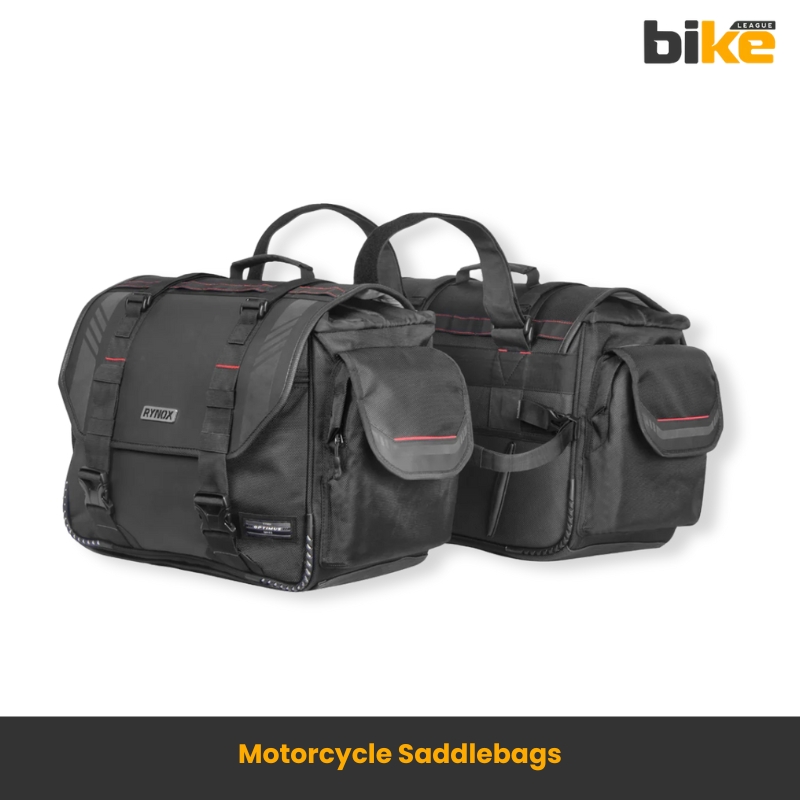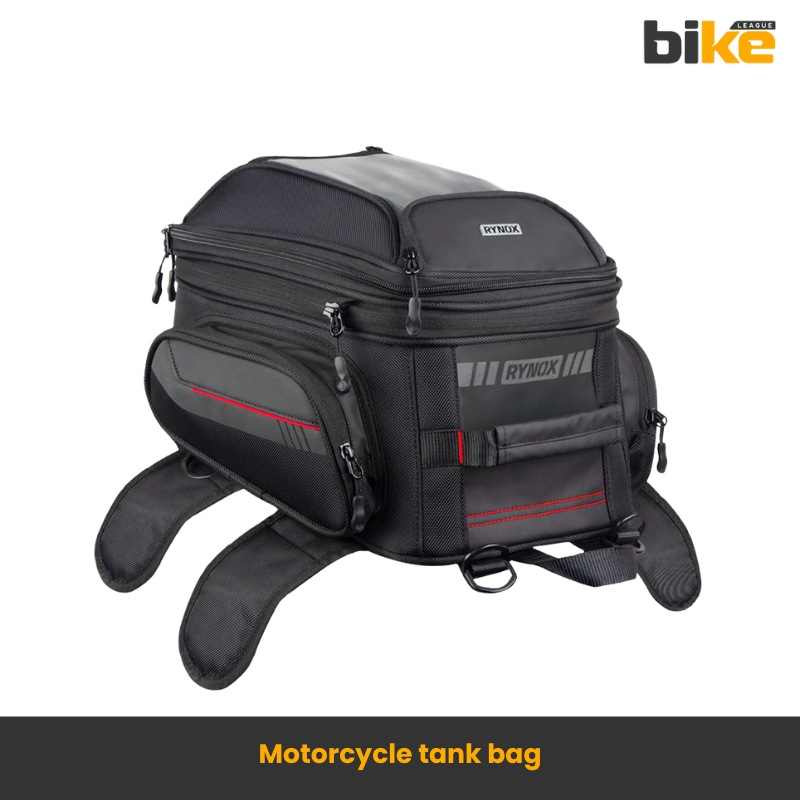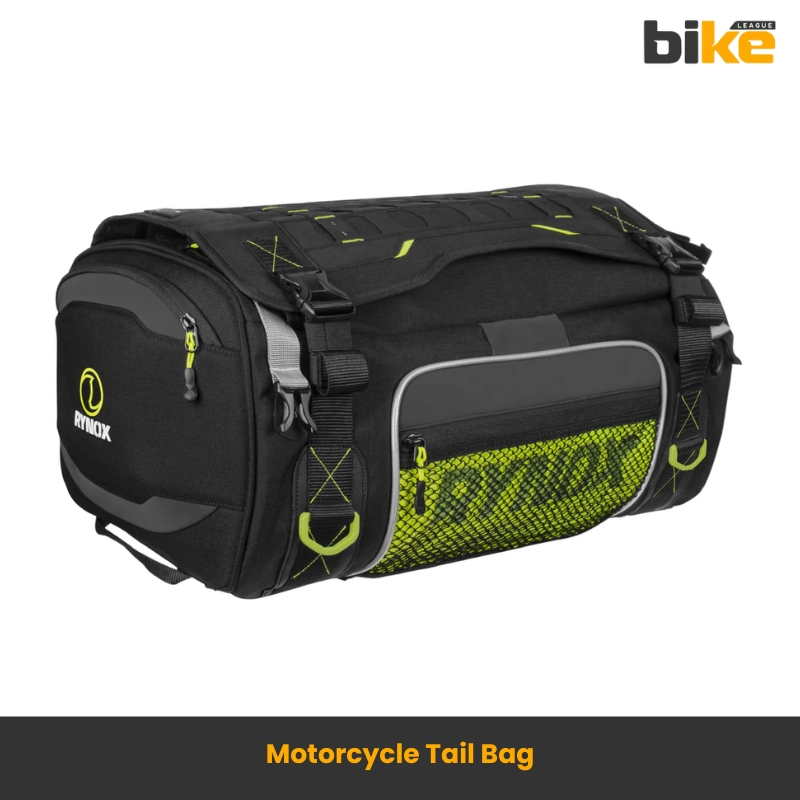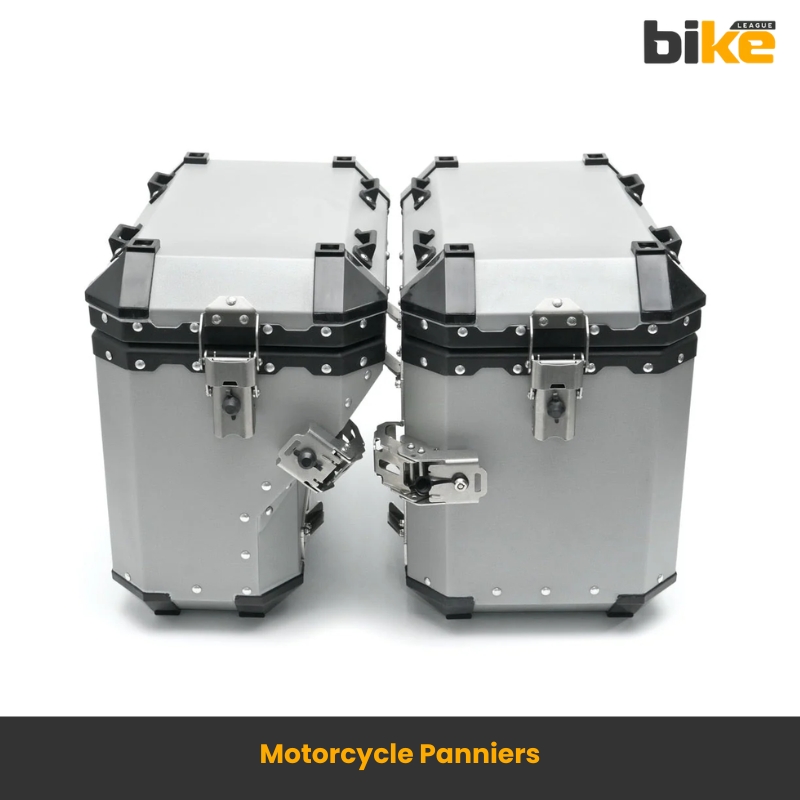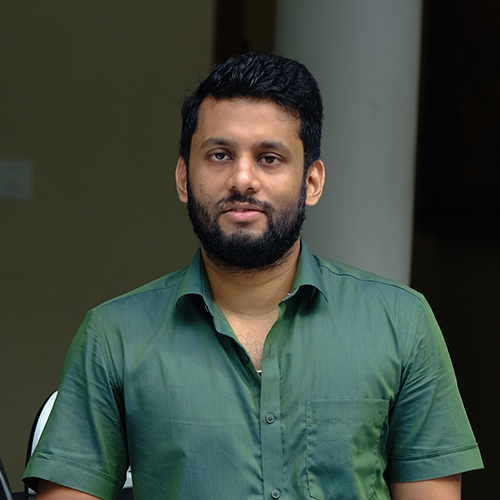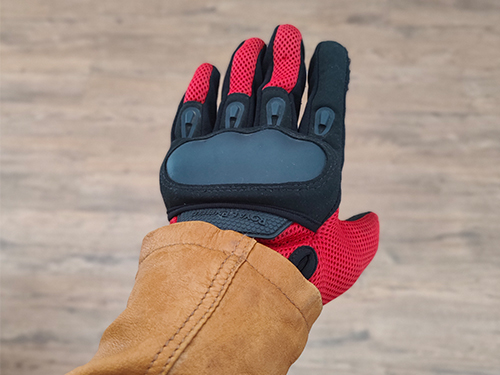
Long story short: If the right bike accessories are there on your long trip, you travel more comfortably, and so will you mentally and physically.
Long-distance bike rides with your friends or loved ones are an excellent experience. The interest in taking long rides with your motorcycle in India is multiplying, and so is the interest in the same. However, long bike rides can be physically and mentally exhausting for the riders.
Riders often invest in accessories for safety and comfort during long bike trips. Helmets, the most essential rider accessory, come in various styles and designs to suit individual preferences.
To gain expertise first, you must take much shorter trips and gradually increase the trip distance range, which is the only way to gain experience. Suppose a person goes for a motorcycle trip once in their lifetime. In that case, their desire to go on yet another trip is enormous. Your connection with nature is stronger and more evident than other modes of transport.
That is the beauty of a bike trip, and like everything of this nature, it also has pros and cons. Our discussion is not about the pros or cons of motorcycle trips; instead, we will focus on the bike accessories or things riders must carry or take while planning a long journey. We will guide you and help you suggest must-have bike accessories and optional accessories that riders must consider during their long trip.
The bike accessories list should carry a rider for a long trip.
1. Full Face Helmet
Only think about planning a trip with a helmet. We recommend using a full-face helmet with good ventilation and a UV light protection visor. One thing to note is that in some states in India, cameras are not allowed to be mounted on the helmet, which will invite you fine.
2. Riding jacket
A professional riding jacket has many features and gives decent protection to your elbow joints, etc. Besides safety, it protects against harsh climates, whether cold or hot. So, choose a riding jacket that adapts to various climate conditions, including rain.
3. Riding pants
Like a riding jacket, riding pants have many features and safety mechanisms for your ankles and knees. Another major USP of riding pants is the materials used, as they provide excellent comfort. If you are on a tight budget, you can opt for jeans, also.
4. Riding gloves
Another essential accessory that most riders ignore. It protects your hands against bruises in case of a fall, extreme climate conditions, etc. Even in extreme conditions, gloves provide excellent grip and protection for fingers and wrists.
5. Riding boots
We recommend professional riding boots, but if unavailable, opt for regular boots with enough ankle protection. Avoid using sneakers, running shoes, etc., as they are not made for this and can easily cause issues.
6. Knee & chest guards
Accessories like knee and chest guards are essential for minimizing injuries during accidents. They provide additional protection beyond the standard riding gear.
7. bike accessories like First aid kit & water bottle holder
While delivering their motorcycles to customers, all companies provide standard tools and first aid kits. But the reality is that a first aid kit is what we least think about and care about. The first aid kit should contain
- Wash proof plaster
- Sterilized Gauze Swab
- Sterilized elastic plaster
- Elastic gauze bandage
- Antiseptic cream
- Gauze Bandages
- Medical adhesive tape
- Pain reliever tablet
- Small cutter/knife/scissors
Ensure all these are available in your first aid kit, and check whether the above items have expired in the existing one. Staying hydrated is crucial during long rides. A water bottle holder ensures easy access to water.
8. Vehicle papers & Spare key
All motorcycle papers, such as a driver’s license, registration certificate, pollution certificate, and insurance certificate, should be there with you, and you need to carry the originals. Apps like Digilocker is there to make matters easy. Still, in remote areas, the internet connection will be a challenge. The vehicle must have a comprehensive insurance plan. A spare key is another mandatory thing; you are doomed if the key is lost on your trip.
9. bike accessories like Phones, Mobile chargers & Powerbank
All three are necessary; we can expect any situation while on a motorcycle trip. So keeping these accessories in the rider’s bag and being prepared helps to tackle challenging problems smoothly.
10. Offline Google Map / GPS Device among bike accessories
Refrain from relying purely on the internet or Google Maps all the time on a trip. Instead, try downloading an offline Google map of the area you will visit. Otherwise, you can use a dedicated GPS device for the same, but you must learn how to use it in advance.
11. bike accessories like Tyre repair kit, Tool kit & Chain lube
The name mentions its importance, and you must learn how to use it. Repair shops are nonexistent in remote areas, and few skilled people are available. Also, you can encounter several unpaved roads, increasing the chances of a puncture. Motorcycle chains can get dirty while facing off-streets, resulting in performance loss and a drop in mileage. So, a chain lube is also handy. Make sure the company tool kit is on your motorcycle.
12. Spare Parts among bike accessories
Items like Bulbs for the headlight, trafficator light, fuse, Accelerator & clutch cables, Spark plug, spark plug cap, and fuel those spark plugs are crucial for addressing mechanical issues during your trip.
13. Phone mount
A phone bike mount is a handy accessory that you can use to mount your phone on your motorcycle. Reaching into your pocket for your phone when riding induces concentration and focus loss, resulting in accidents.
14. Raincoat
This is optional, as the latest riding jackets and pants are water-resistant and have several excellent features. If these are unavailable on your next trip, ensure the raincoat is in your bag.
15. Bungee cord & Torch
A Bundle cord is a stretchable type used to tie and hook bags on your motorcycle. It is beneficial for your travel bags and is mandatory when you carry more than one bag. A torch is also needed when you check deep inside the vehicle in case of breakdown and low-light conditions outside. So, these accessories are indispensable components in the rider’s bag.
16. Travel Bag
Opt for a bag with a water-resistant feature and enough space. There are several types of bags you can consider, and some of them are
- Saddle bags
- Tank bags
- Tail bags
- Panniers
17. Ergonomic Seats & Cushions
Long rides can be taxing on your body. Investing in ergonomic seats or seat cushions can prevent soreness and discomfort, allowing you to focus on the ride.
18. Handlebar Grips
Quality grips reduce hand fatigue and vibrations, enhancing riding comfort over long distances.
19. Windshields
A windshield protects you from wind fatigue and debris, improving aerodynamics and overall comfort.
20. High-Visibility Gear and Reflective Tapes among bike accessories
Wearing high-visibility jackets and using reflective tapes ensure you’re easily seen by other motorists, increasing your safety.
Differences Between Motorcycle Storage Options: Saddlebags, Tank Bags, Tail Bags, & Panniers
1. Saddlebags
Soft or semi-rigid bags that attach to either side of the rear seat. They are moderately priced, offer moderate capacity, and have minimal impact on handling. Still, they are less secure and not fully weatherproof.
Mounting
Strap or clip to rear subframe, hanging low on each side
Capacity
10–40 L per side
Pros
- Low-hanging weight keeps centre-of-gravity down
- Quick on/off; collapsible when empty
- Budget-friendly
Cons
- Limited total volume
- Less secure; variable weatherproofing
- May sway if not tightened
2. Tank Bags
Small bags (3–15 L) that mount on the fuel tank using magnets or straps are great for quick-access items like phones and maps. They have limited space and keep weight centered.
Mounting
Magnets, straps, or quick-attach plate on fuel tank
Capacity
3–15 L
Pros
- Instant access to phone, maps, wallet
- Clear map window on top
- Centralised weight, minimal handling impact
Cons
- Very limited space
- Can obstruct fuel-cap or scratch paint
- Not suited for bulky items
3. Tail Bags
A large bag (10–50 L+) strapped to the pillion seat or rack is ideal for bulky gear. It is often waterproof and expandable, but it raises the rear load and can block passenger space.
Mounting
Strap onto pillion seat or rear rack
Capacity
10–50 L (often expandable)
Pros
- Single large compartment for bulky gear
- Many models are fully waterproof
- Easy to load/unload
Cons
- Raises rear load—steering feels heavier
- May block passenger seat or taillight
- Less modular than side luggage
4. Panniers (Hard Cases)
Lockable, weatherproof side cases mounted on racks. They provide the highest capacity (20–50 L+ each) and security but are heavier, bulkier, and more expensive to install.
Mounting
Bolt onto dedicated rack/frame on each side
Capacity
20–50 L per case (+ optional top-case)
Pros
- Lockable for security
- Excellent weatherproofing and durability
- Organized interior dividers
Cons
- Heaviest and bulkiest option
- Highest cost; permanent rack installation
- Increases bike width
FAQ related to bike accessories for a long trip
1. What is the most important safety accessory for a motorcycle trip?
The helmet is the most critical safety accessory for any motorcycle trip. It provides essential protection for your head in an accident and is legally required in India. Always choose a helmet that meets safety standards and fits well for maximum protection.
2. Why is a riding jacket necessary?
A riding jacket is essential for protection and style. It offers protection against the elements and potential injuries from falls. For added safety, look for jackets with armour at crucial impact points like elbows and shoulders.
3. What type of pants should I wear for a long ride?
Riding pants are crucial for comfort and safety. They are designed to protect your lower body from abrasions and impacts. Opt for pants with reinforced areas and breathable materials to ensure comfort during long rides.
4. How do gloves contribute to a safer ride?
Gloves are essential for maintaining a good grip on the handlebars and protecting your hands from the elements and injuries. Choose gloves that offer both protection and comfort, especially for long rides.
5. Are riding boots necessary for a motorcycle trip?
Riding boots provide stability and protection for your feet and ankles. They are designed to withstand the rigours of long rides and offer protection in case of an accident. Look for boots with sturdy soles and ankle support.
6. How can I stay connected during my trip?
A communication system is vital for staying connected with fellow riders and for navigation purposes. It allows you to communicate hands-free and can be integrated with GPS systems for better route management.
7. What luggage options are best for carrying essentials?
Motorcycle luggage, such as saddlebags, tank bags, and tail bags, is essential for riders carrying gear and personal items. These bags are designed to be durable and weather-resistant, ensuring your belongings are safe and accessible.
8. Why is a GPS navigation system important?
A GPS navigation system is crucial for navigating unfamiliar routes and ensuring you stay on track. It helps plan your journey and can be a lifesaver in remote areas with scarce road signs.
9. What should be included in a motorcycle tool kit?
A tool kit is essential for handling minor repairs on the road. It should include basic tools like screwdrivers, wrenches, and a puncture repair kit. A tool kit can save you from being stranded due to minor mechanical issues.
10. Is travel insurance necessary for a motorcycle trip in India?
Travel insurance is highly recommended for any long-distance motorcycle trip. It covers medical emergencies, trip cancellations, and other unforeseen events. Ensure your policy covers motorcycle travel specifically.
11. Which full-face helmets are best suited for Indian touring conditions?
Look for a full-face helmet with:
- Dual-density EPS liner for impact absorption
- Removable, washable interiors
- Integrated sun-visor
- Good airflow (multiple vents)
12. How do I choose luggage solutions (panniers, saddlebags, tail-packs) for an India trip?
Opt for hard panniers (aluminium or ABS) for durability on rough roads or high-quality waterproof soft saddle- and tank bags for flexibility.
Ensure they have:
- 250–350 L combined capacity
- Lockable mounts
- Quick-release system for easy loading at dhabas or hotels.
13. What’s the best way to mount and protect my smartphone/GPS on the bike?
Use a rugged, waterproof phone cradle (e.g., X-Grip with TPU cover) or a dedicated GPS unit (Garmin Zumo series). Look for mounts with 360° rotation, anti-vibration rubber inserts, and easy one-hand locking.
15. How can I stay hydrated and organized on long rides?
Carry:
- A 2–3 L hydration bladder in a lightweight backpack or tail-pack
- Collapsible water bottles for easy refills
- Snack pouches with nuts, energy bars, or glucose tablets in accessible pockets
16. Which rain gear is most effective for India’s monsoon roads?
Invest in a two-piece breathable rain suit (jacket + pants) made of Gore-Tex or similar, with fully taped seams. Over-boots and helmet rain covers keep you dry and improve visibility.
17. How do I power and charge my gadgets on the road?
- Fit a 12 V USB-C power outlet on the handlebar ( under professional guidance and support)
- Carry a 10,000 mAh power bank (PD/QC fast-charge)
- Use solar-powered battery packs for multi-day remote stretches
Other related articles from Bikeleague India
- Motorcycle gloves in India – All in one buying guide
- Motorcycle helmet in India – All in one buying guide
- Best bike trip routes in Kerala
- Motorcycle disc brake – Everything you need to know
- Must have bike documents for travel in India
Conclusion
We discussed all the bike accessories riders must carry for their next long trip. Other accessories might change or vary according to the rider. Here, we focus on the mandatory bike trip accessories, regardless of place and people. Investing in quality accessories tailored to the rider’s needs will ensure that every ride is safe, enjoyable, and memorable.
If you have any other doubts or queries, email us at bikeleague2017@gmail.com. You can also share your doubts or opinions in the comments section below. We are always eager to help and assist you. Also, here are several social media platforms of Bikeleague India to raise your suspicions.

